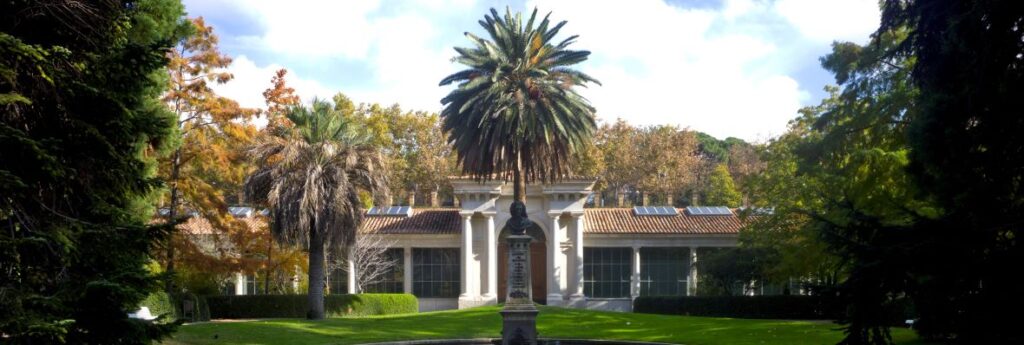Madrid’s tree-lined Paseo del Prado boulevard – one of the most famous streets in Europe and home to the famed Prado Museum – and the neighbouring Retiro park have been added to UNESCO’s World Heritage list, joining 33 sites that were designated by the United National agency this week.
World Heritage sites can be examples of outstanding natural beauty or manmade buildings and can be important geologically or ecologically, or they can be key for human culture and tradition. The first ones first were designated in 1978 (including Yellowstone National Park and the Galapagos Islands) and last year’s were postponed because of the pandemic.
Praising the 200-hecatre Paseo del Prado and Buen Retiro as “a landscape of arts and science” in the urban heart of Madrid, UNESCO called the cultural landscape a prototype of the Hispanic alamed in the 16th century, and home to major fountains, notably the Fuente de Cibeles and the Fuente de Neptuno, and the Plaza de Cibeles, an iconic symbol of the city, surrounded by prestigious buildings.
The boulevard runs along side the 120-hectare Jardines del Buen Retiro (Garden of Pleasant Retreat), a remnant of the 17th-century Buen Retiro Palace, which constitutes the largest part of the property, displaying different gardening styles from the 19th century to the present. The site also houses the terraced Royal Botanical Garden and the largely residential neighbourhood of Barrio Jerónimos with its rich variety of 19th- and 20th-century buildings that include cultural venues.
The boulevard dates back to 16th century while the park was originally for royal use in the 17th century before it was fully opened to the public in 1848.
“Today, in these times of pandemic, in a city that has suffered enormously for the past 15 months, we have a reason to celebrate with the first world heritage site in Spain’s capital,” said Madrid mayor José Luis Martínez-Almeida.
The site is number 49 for Spain on the UNESCO list.
Some of the other World Heritage sites announced this week include: The Great Spa Towns of Europe; Cordouan Lighthouse, France; Jomon Prehistoric Sites in Northern Japan; Chankillo Archaeoastronomical Complex, Peru; and the Ḥimā Cultural Area, Saudi Arabia.
And these:
China, Quanzhou: Emporium of the World in Song-Yuan China
The serial site of Quanzhou illustrates the city’s vibrancy as a maritime emporium during the Song and Yuan periods (10th – 14th centuries AD) and its interconnection with the Chinese hinterland. The site encompasses religious buildings, including the 11th century AD Qingjing Mosque, one of the earliest Islamic edifices in China, Islamic tombs, and a wide range of archaeological remains: administrative buildings, stone docks that were important for commerce and defence, sites of ceramic and iron production, elements of the city’s transportation network, ancient bridges, pagodas, and inscriptions. Known as Zayton in Arabic and western texts of the 10th to 14th centuries AD.
India, Kakatiya Rudreshwara (Ramappa) Temple, Telangana
Rudreshwara, popularly known as Ramappa Temple, is located in the village of Palampet approximately 200 km north-east of Hyderabad, in the State of Telangana. It is the main Shiva temple in a walled complex built during the Kakatiyan period (1123–1323 CE) under rulers Rudradeva and Recharla Rudra. The building features decorated beams and pillars of carved granite and dolerite with a distinctive and pyramidal Vimana (horizontally stepped tower) made of lightweight porous bricks, so-called ‘floating bricks’, which reduced the weight of the roof structures. The temple’s sculptures of high artistic quality illustrate regional dance customs and Kakatiyan culture. Located at the foothills of a forested area and amidst agricultural fields, the choice of setting for the edifice followed the ideology and practice sanctioned in dharmic texts that temples are to be constructed to form an integral part of a natural setting, including hills, forests, springs, streams, lakes, catchment areas, and agricultural lands.
Islamic Republic of Iran, Trans-Iranian Railway
The Trans-Iranian Railway connects the Caspian Sea in the northeast with the Persian Gulf in the southwest crossing two mountain ranges as well as rivers, highlands, forests, and plains, and four different climatic areas. Started in 1927 and completed in 1938, the 1,394-km-long railway is notable for its scale and the engineering works it required to overcome steep routes and other difficulties. Its construction involved extensive mountain cutting in some areas, while the rugged terrain in others dictated the construction of 174 large bridges, 186 small bridges and 224 tunnels, including 11 spiral tunnels.

